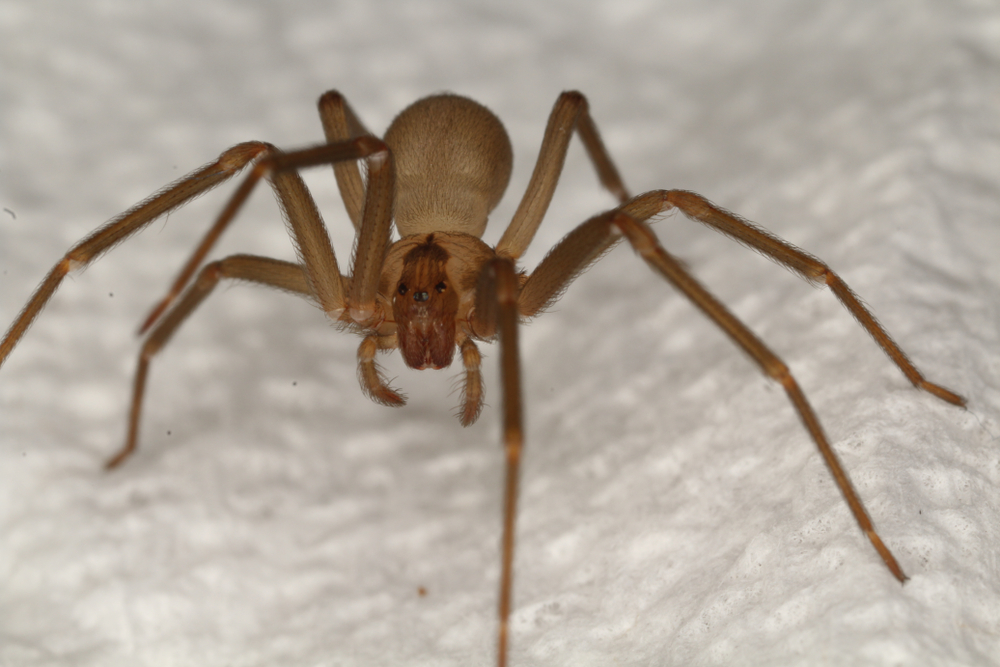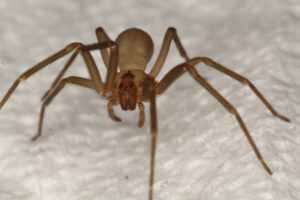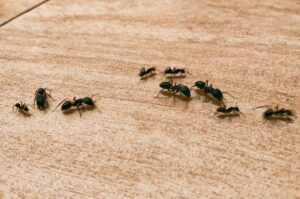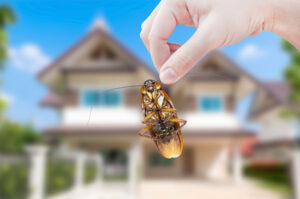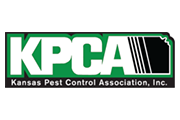Spiders are among the scariest but also least concerning pests. Their solitary nature means you’re less likely to get a damaging infestation like you would with ants or termites, and they can even help keep bug populations under control. That said, spiders will often bite when they feel threatened, and some species native to Kansas City are venomous. And then there’s the unsightly spiderwebs to clean! For the sake of your home safety, it’s best to keep these eight-legged creatures out of your home through proper spider management techniques.
Common Household Spiders in Kansas City
You can expect to run into a few species of spiders in Kansas City homes. Although they are mainly harmless, some can pack a serious punch if you get close enough for them to bite you. Here’s a rundown of some common household spiders in our area and how to identify them.
Brown Recluse
If you live in Kansas City, you’ve likely heard the horror stories about venomous brown recluse bites. Brown recluses are often considered second only to black widows because their bite has been known to cause hospitalization and even death in extremely rare cases.
A brown recluse can be identified by the unique violin shape on its head and thorax. It also has only three pairs of eyes compared to the four most spiders have — but if you’re close enough to count, you’re probably too close!
Wolf Spider
Wolf spiders are considered “nuisance pests,” which means that while you don’t particularly want them in your home, they aren’t of any serious concern if left alone. Even if a wolf spider does bite you, the result is no worse than a typical bug bite unless you have an allergic reaction.
What makes these spiders so frightening to arachnophobes is their speed. Unlike most spiders, which hunt using their webs, wolf spiders are extremely fast and prefer to chase down their prey.
These spiders are relatively large compared to other household spiders, with males growing as big as ¾ inches and females up to 1½ inches. You can identify them by their dark brown hair and lighter brown or yellow stripes.
Cellar Spider
These leggy spiders are extremely easy to identify because of their extremely long, slim legs. You may not be familiar with the name “cellar spider,” but you’ve certainly heard their more popular nickname: Daddy Long Legs! This fond nickname matches their dormant personality, as cellar spiders have rarely been known to bite humans. Even if they do bite, you may hardly notice it as the pain is subtle and only lasts a few seconds.
Cellar spiders usually don’t grow larger than a half inch, but their legs can grow as long as two inches. They get their name from their preferred locations in the house: cellars, garages, attics, basements, and other damp places that provide easy access to water.
Common House Spider
These tiny spiders are the most frequently encountered in American households. A female can lay thousands of eggs during her one-year lifespan. This fast multiplication makes them less than ideal house guests, though they only bite when provoked and leave a small red bump similar to a bug bite.
House spiders are yellow-brown in color, with a dirty white abdomen and striped brown legs. Thanks to pest control professionals, house spiders are more common in outdoor buildings like sheds, barns, and garages than inside homes.
Spider Management Tips
Although three of the four common household spiders in Kansas City are relatively harmless, you still don’t want any of them getting comfortable in your home! Here are a few spider management best practices to reduce your chances of an unexpected eight-legged visitor.
1. Reduce Clutter
Clutter creates handy places for spiders to hide and build their webs. This is why they are so commonly found in garages, attics, and other storage locations around the home! Keeping clutter to a minimum will significantly reduce your chances of a spider infestation, as there won’t be as many ideal locations for them to hide out.
2. Address Underlying Insect Issues
You can think of spiders as nature’s pest control: if you don’t have pests, you don’t need them to come help with the management! But if you do have other pests, you’re providing spiders with a food source. So by preventing and eliminating other bug infestations in your home, you remove spiders’ primary food source, forcing them to look elsewhere for prey.
Safe Removal Techniques if You Find a Spider in Your Home
Attempting to squish a spider or scoop it up in a cup and take it outside may be your first instinct, but these methods of spider control can get you close enough to risk being bitten. While it’s probably fine for less dangerous, slower species like cellar spiders and common house spiders, you’ll be hard-pressed to catch a wolf spider, and it’s better not to risk a brown recluse bite.
If you find evidence of a spider infestation or encounter a brown recluse, don’t attempt to self-treat the situation! Instead, contact pest control immediately.
Reclaim Your Territory from the Arachnids!
If you’re faced with near-daily occurrences of spiders in your bathroom or kitchen and are fed up dealing with them, let us take the lead! Our safe and noninvasive pest control methods will take care of existing infestations and reduce the chances of future home invasions. Contact Advantage Termite and Pest Control today to schedule your inspection. Call us at first sight – we do it right!

